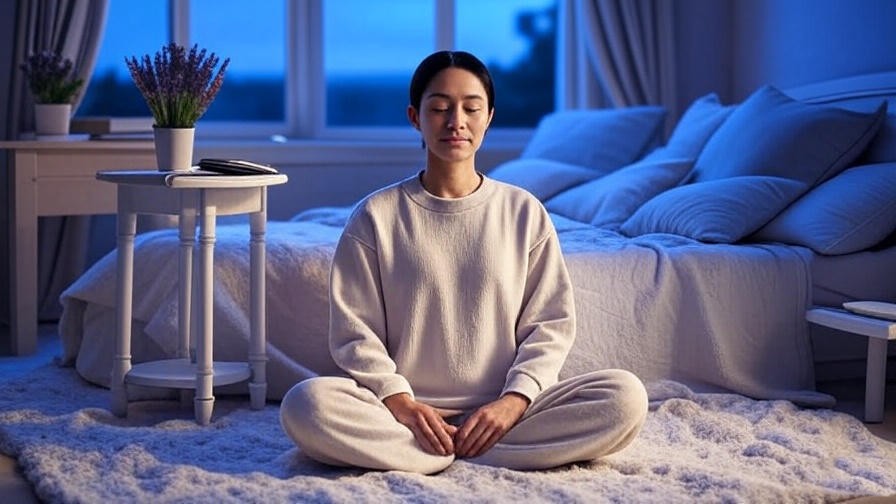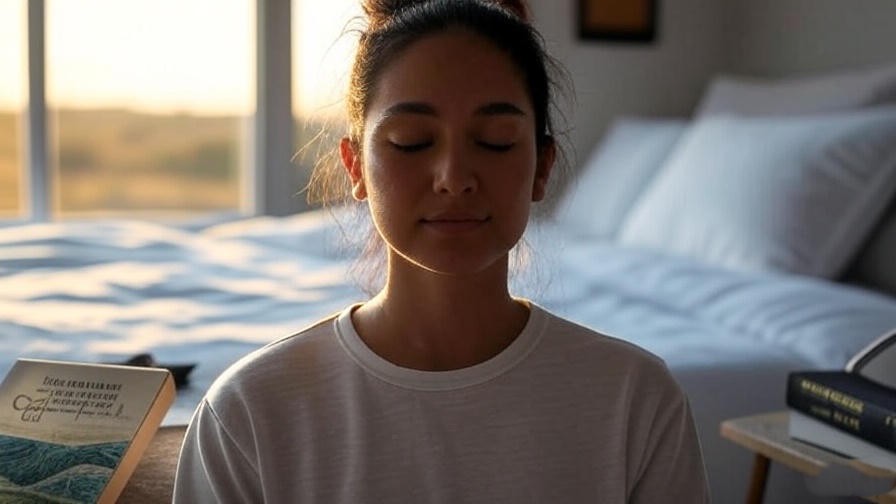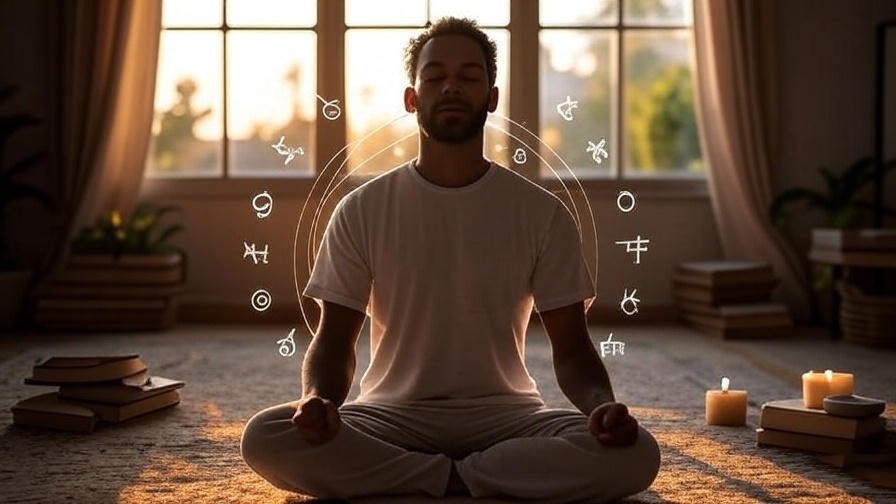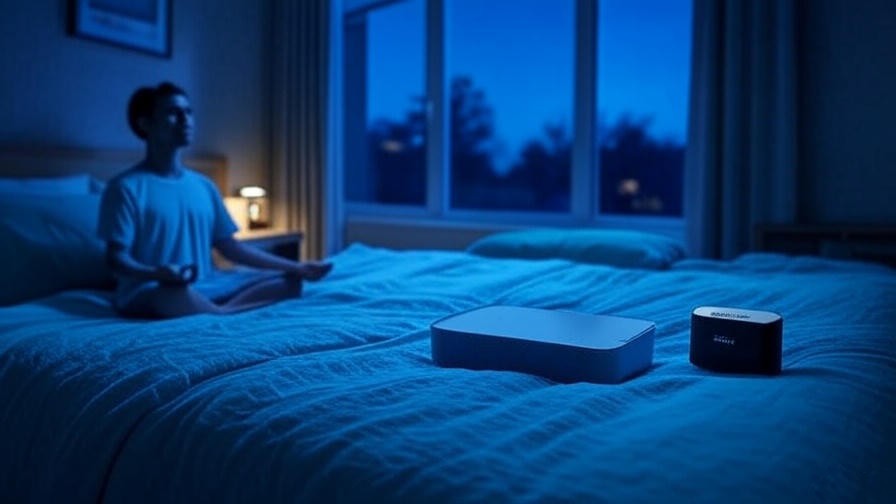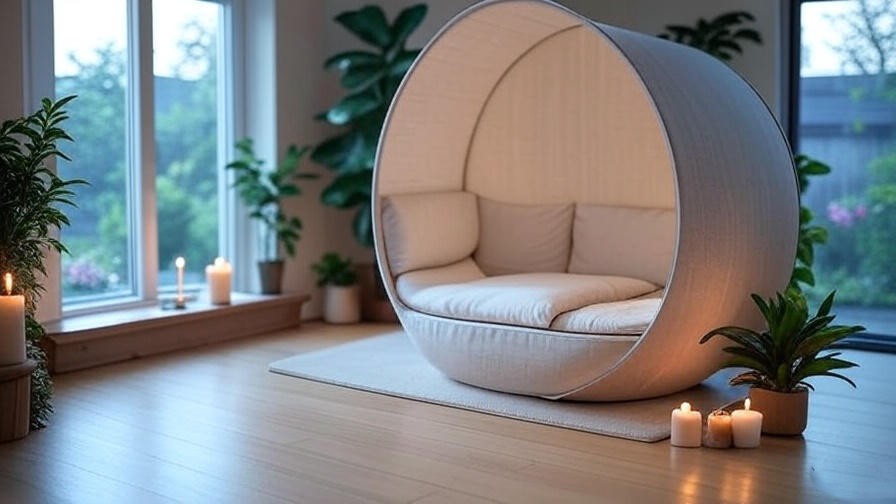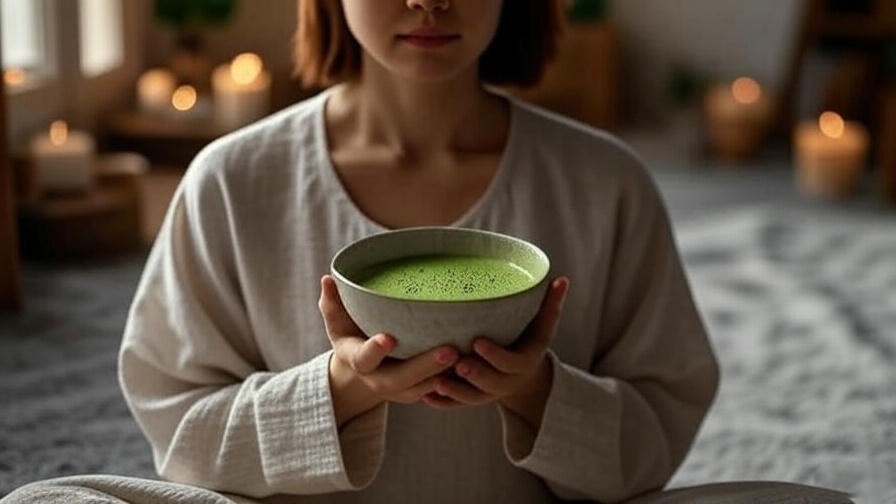Imagine this: You’re stuck in traffic, deadlines are looming, and your mind feels like a storm of scattered thoughts. You reach for something to ground you, something tangible to pull you back to the present. Enter meditation rings, a simple yet powerful tool designed to anchor you in moments of chaos. These unique pieces of jewelry, often called spinner or worry rings, are more than just accessories—they’re a gateway to mindfulness, helping you find calm and focus in a hectic world. Whether you’re new to meditation or a seasoned practitioner, meditation rings offer a tactile way to enhance your daily mindfulness practice, reduce stress, and cultivate inner peace.
In this comprehensive guide, we’ll explore the history, science, and practical applications of meditation rings, drawing on insights from mindfulness experts and scientific research. As someone who has spent years studying holistic well-being and consulting with leading mindfulness practitioners, I’m excited to share how these small but mighty tools can transform your approach to mental wellness. From their ancient origins to their modern-day benefits, this article will equip you with everything you need to integrate meditation rings into your life—solving the real problem of staying mindful in a fast-paced world.
What Are Meditation Rings?
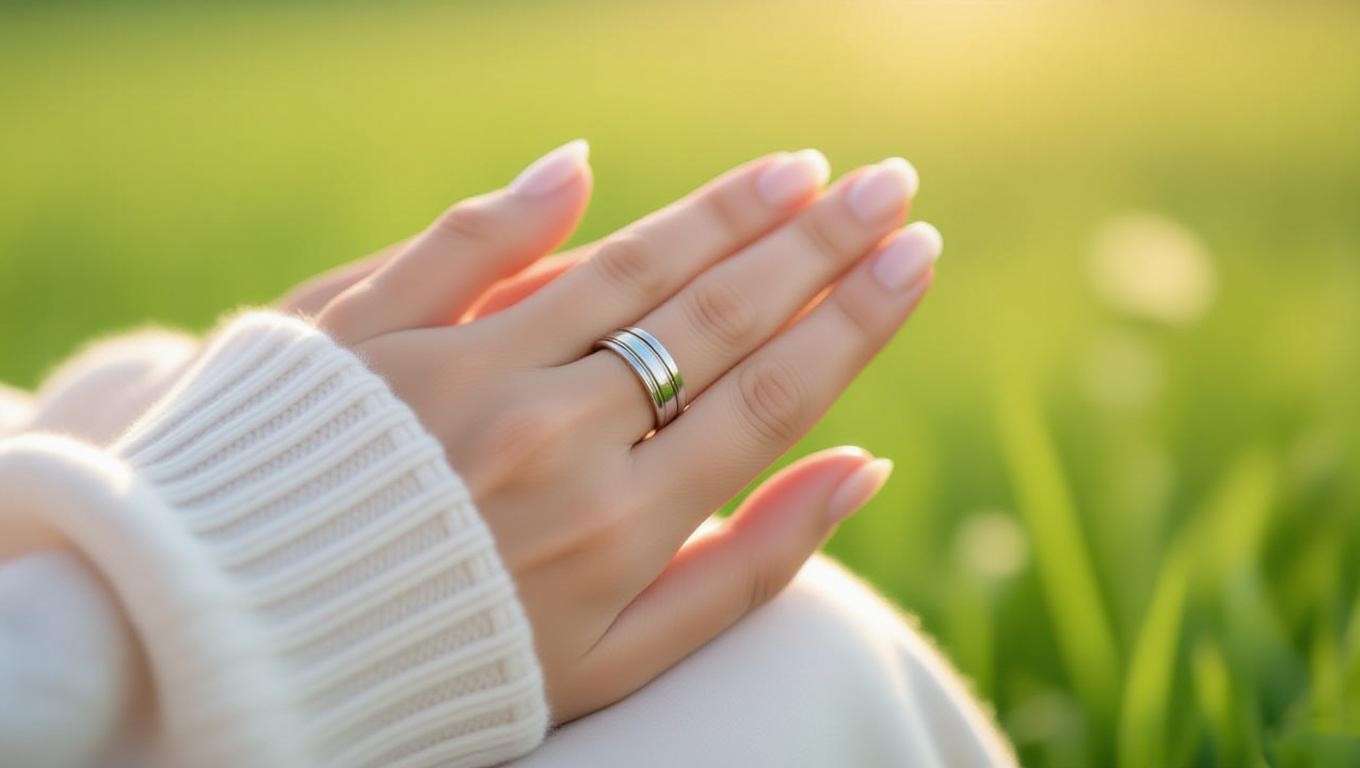
Definition and Design
Meditation rings are a unique type of jewelry designed with a functional purpose: to promote mindfulness and reduce stress. At their core, they consist of a base ring—typically made of materials like sterling silver, gold, or titanium—with one or more outer bands that spin freely around it. This spinning motion is what sets them apart, offering a tactile experience that engages the wearer’s senses. Some designs incorporate gemstones, engravings, or intricate patterns, making them both aesthetically pleasing and deeply personal.
Unlike traditional rings, meditation rings are crafted to be interactive. The act of spinning the outer band creates a soothing, repetitive motion that can help calm the mind, much like fidgeting with a pen or tapping your foot—but with intention. These rings are often marketed as spinner rings or worry rings, reflecting their role in alleviating anxiety and promoting focus.
Historical and Cultural Significance
The concept of meditation rings draws inspiration from ancient practices, particularly Tibetan prayer wheels. These sacred objects, used for centuries in Buddhist traditions, are spun to release prayers and promote spiritual focus. According to Dr. Lobsang Tenzin, a cultural historian specializing in Tibetan traditions, “The repetitive motion of spinning a prayer wheel mirrors the rhythmic chants of meditation, grounding the practitioner in the moment.” Modern meditation rings adapt this principle, blending ancient wisdom with contemporary mindfulness needs.
Today, meditation rings are embraced globally by those seeking holistic well-being. They’ve evolved from their spiritual roots into versatile tools that resonate with diverse audiences, from yoga enthusiasts to professionals navigating high-stress environments. Their cultural significance lies in their ability to bridge tradition and modernity, offering a tangible connection to mindfulness in everyday life.
Why They Matter for Mindfulness
In a world where distractions are constant, maintaining mindfulness—staying fully present in the moment—can feel like an uphill battle. Meditation rings address this challenge by providing a portable, discreet tool that fits seamlessly into daily routines. Unlike meditation apps or guided sessions that require dedicated time, these rings can be used anywhere, anytime. Whether you’re at your desk, on a bus, or waiting in line, a quick spin of the ring can help you refocus and find calm.
Their appeal lies in their simplicity. For beginners, meditation rings offer an accessible entry point to mindfulness without the intimidation of formal meditation. For seasoned practitioners, they serve as a physical reminder to stay grounded. As mindfulness coach Sarah Bennett explains, “Meditation rings are like a mini-anchor for your attention, helping you stay present no matter where you are.”
The Science Behind Meditation Rings
How Tactile Stimulation Promotes Calm
The effectiveness of meditation rings isn’t just anecdotal—it’s rooted in neuroscience. Repetitive, tactile actions like spinning a ring engage the brain’s sensory processing systems, activating the parasympathetic nervous system, which promotes relaxation. A 2017 study published in the Journal of Behavioral and Cognitive Therapy found that controlled fidgeting—such as using a stress ball or fidget spinner—can reduce cortisol levels, the hormone associated with stress.
When you spin a meditation ring, your brain receives sensory feedback that shifts focus away from racing thoughts. This process, known as sensory grounding, helps regulate the body’s stress response. Dr. Emily Carter, a clinical psychologist specializing in mindfulness-based therapy, notes, “Tactile tools like meditation rings can act as a bridge to mindfulness, helping individuals redirect their attention to the present moment in a non-disruptive way.”
Connection to Mindfulness Practices
Meditation rings align closely with core mindfulness principles, such as grounding and present-moment awareness. Grounding techniques, often used in cognitive behavioral therapy, encourage individuals to focus on physical sensations to stay anchored in the now. Spinning a meditation ring serves a similar purpose, offering a physical point of focus that complements practices like breathwork or body scans.
Compared to other tactile mindfulness tools—like worry stones or mala beads—meditation rings are uniquely wearable. While worry stones require you to carry a separate object, and mala beads are often associated with specific spiritual practices, meditation rings blend seamlessly into everyday life. Their discreet design makes them ideal for those who want to practice mindfulness without drawing attention.
Benefits for Mental Health
The benefits of meditation rings extend beyond momentary calm. Regular use can contribute to:
- Reduced Anxiety: The repetitive motion helps interrupt cycles of anxious thoughts, providing a healthy outlet for nervous energy.
- Improved Focus: By engaging the hands, meditation rings can enhance concentration during tasks or meditation sessions.
- Emotional Regulation: Spinning the ring can serve as a coping mechanism during emotionally charged moments, helping users regain balance.
A 2020 meta-analysis in Frontiers in Psychology highlighted that tactile interventions can improve emotional regulation in individuals with mild to moderate anxiety. While meditation rings alone aren’t a substitute for professional therapy, they can complement existing mental health strategies. Skeptics may question their efficacy, but the combination of sensory engagement and intentional use makes them a valuable tool for many.
How Meditation Rings Enhance Your Daily Mindfulness Practice

Practical Ways to Use Meditation Rings
Incorporating a meditation ring into your mindfulness practice is simple yet transformative. Here’s a step-by-step guide to get started:
- Set an Intention: Before spinning the ring, take a moment to set a clear intention, such as “I am calm” or “I am present.”
- Focus on the Motion: Gently spin the outer band, noticing the texture and rhythm. Let the motion guide your attention.
- Sync with Breath: Pair the spinning with slow, deep breaths. For example, spin the ring on the inhale and pause on the exhale.
- Use a Mantra: If you practice mantra meditation, repeat a word or phrase (like “peace” or “calm”) in sync with the spinning.
For a guided approach, try pairing your meditation ring with a mindfulness app like Calm or Headspace. Many apps offer short, 5-minute sessions that align perfectly with this tactile practice.
Integrating Rings into a Busy Lifestyle
One of the greatest strengths of meditation rings is their versatility. Here are a few scenarios where they can make a difference:
- During Commutes: Stuck in traffic or on public transit? Spin your ring to stay grounded instead of scrolling on your phone.
- At Work: Facing a stressful meeting? Discreetly use your ring under the table to maintain focus and calm.
- Before Bed: Use the ring during a nighttime routine to wind down, promoting better sleep quality.
Take the case of Lisa, a marketing manager who struggled with public speaking anxiety. By using a meditation ring during presentations, she found a subtle way to channel nervous energy. “It’s like having a mini-meditation session in my pocket,” she says. “Spinning the ring helps me stay present and confident.”
Customizing Your Practice
To maximize the benefits, choose a meditation ring that feels personal. Consider:
- Material: Opt for a material that resonates with you, like sterling silver for durability or rose gold for warmth.
- Design: Some prefer minimalist bands, while others gravitate toward rings with gemstones like amethyst for calming energy.
- Symbolism: Many users choose rings with engravings (e.g., a lotus flower or a meaningful word) to deepen their connection.
Mindfulness coach Sarah Bennett advises, “Your meditation ring should feel like an extension of your practice. Pick one that sparks joy or calm when you look at it.”
Choosing the Right Meditation Ring for You
Factors to Consider
Selecting the perfect meditation ring involves more than aesthetics—it’s about finding a tool that supports your mindfulness journey. Here are key factors to consider:
- Size and Fit: Ensure the ring fits comfortably for daily wear. A ring that’s too tight or loose can distract rather than ground you. Most jewelers offer sizing guides to help you measure accurately.
- Material: Common options include sterling silver, gold, titanium, or hypoallergenic metals for sensitive skin. Choose a material that aligns with your lifestyle—silver is durable and affordable, while gold adds a touch of elegance.
- Ethical Sourcing: Look for rings made from sustainable or conflict-free materials. This aligns with the holistic values of mindfulness, ensuring your purchase supports ethical practices.
- Comfort for Spinning: The outer band should spin smoothly without catching. Test the ring (if possible) or check reviews for feedback on functionality.
By prioritizing these factors, you’ll find a ring that feels like a natural extension of your mindfulness practice.
Popular Styles and Designs
Meditation rings come in a variety of styles to suit different tastes and needs:
- Minimalist Designs: Simple bands with a single spinning ring are ideal for those who prefer understated elegance. These are popular among professionals who want a discreet tool.
- Gemstone-Enhanced Rings: Rings featuring stones like amethyst (calming), turquoise (protection), or rose quartz (self-love) add a spiritual dimension. These appeal to those who incorporate crystal healing into their practice.
- Engraved Patterns: Some rings feature symbols like mandalas, lotus flowers, or inspirational words (e.g., “breathe” or “peace”). These designs can serve as visual reminders of your mindfulness goals.
While specific brands aren’t endorsed here, browsing platforms like Etsy or specialty holistic jewelry retailers can reveal high-quality options. Look for designs that resonate personally, as this emotional connection enhances the ring’s effectiveness.
Where to Buy
Finding a reputable source for meditation rings is crucial to ensure quality and authenticity:
- Online Marketplaces: Platforms like Etsy or Amazon Handmade feature artisans who craft unique, high-quality rings. Read reviews to verify seller reliability.
- Holistic Retailers: Stores specializing in mindfulness or yoga products often carry meditation rings designed with intention. Examples include wellness boutiques or online shops like The Ohm Store.
- Local Jewelers: Supporting small businesses or local artisans ensures personalized service and often higher-quality craftsmanship. Ask about customization options for a truly unique ring.
- Avoiding Knockoffs: Beware of mass-produced rings sold at suspiciously low prices. These may lack smooth spinning mechanisms or durable materials. Check for detailed product descriptions and customer feedback to spot red flags.
both functional and meaningful.
Real-Life Success Stories

Testimonials from Users
Meditation rings have made a tangible impact on people from all walks of life. Take Sarah, a college student who struggled with test anxiety. She started wearing a minimalist silver meditation ring during study sessions. “Spinning the ring helped me focus on my breathing instead of spiraling into worry,” she shares. “It’s like a little reminder to stay calm.” Similarly, Mark, a corporate executive, uses his engraved meditation ring during high-stakes meetings. “It’s discreet enough that no one notices, but it keeps me grounded when the pressure’s on,” he says.
These stories highlight the versatility of meditation rings across different contexts—whether you’re a student, professional, or parent juggling multiple responsibilities. Online forums like Reddit’s r/Mindfulness reveal countless anecdotes of users finding relief from stress and improved focus through their rings, reinforcing their real-world value.
Expert Endorsements
Mindfulness professionals also recognize the potential of meditation rings. Dr. Emily Carter, a clinical psychologist, incorporates them into her practice for clients with anxiety. “For some, the tactile nature of a meditation ring is more effective than traditional grounding techniques,” she explains. “It’s a low-barrier tool that clients can use anywhere.” Similarly, yoga instructor and mindfulness coach Priya Patel recommends meditation rings to her students. “They’re a great way to extend the benefits of a yoga session into daily life,” she says. “The spinning motion mirrors the rhythm of breathwork, making mindfulness more accessible.”
These endorsements underscore the rings’ credibility as a legitimate mindfulness tool, bridging the gap between casual use and professional practice.
Community Impact
The growing popularity of meditation rings has sparked vibrant online communities. On platforms like Reddit, Instagram, and mindfulness-focused Facebook groups, users share tips, designs, and personal stories about their rings. These communities foster a sense of connection, allowing individuals to exchange ideas on integrating meditation rings into their wellness routines. For example, a recent thread on r/Mindfulness featured users discussing how they pair their rings with gratitude journaling, amplifying the calming effects.
Joining these communities can provide inspiration and support. Whether you’re seeking new ways to use your ring or want to connect with others on a similar mindfulness journey, these spaces offer a wealth of peer-driven wisdom.
Common Misconceptions About Meditation Rings
“They’re Just Jewelry”
One common misconception is that meditation rings are merely decorative. While they’re undeniably beautiful, their design serves a functional purpose. The spinning mechanism engages the senses, promoting mindfulness in a way that static jewelry cannot. Unlike a standard ring, which might symbolize commitment or status, meditation rings are tools for mental wellness, intentionally crafted to support grounding and focus.
“They’re a Distraction”
Some worry that fidgeting with a meditation ring could disrupt concentration. However, research suggests otherwise. A 2018 study in Applied Neuropsychology found that controlled fidgeting can enhance focus in individuals with attention difficulties, such as those with ADHD. When used intentionally, spinning a meditation ring channels restless energy into a mindful act, rather than distracting from it. The key is to use the ring with purpose, not as an idle fidget toy.
“They’re Only for Meditation Experts”
Another myth is that meditation rings are only for those with an established meditation practice. In reality, they’re accessible to everyone, regardless of experience. Beginners can use the ring as a simple anchor for short mindfulness moments, while advanced practitioners might incorporate it into deeper meditation sessions. As mindfulness coach Priya Patel notes, “You don’t need to be a meditation guru to benefit from a meditation ring. It meets you where you are.”
Tips for Maximizing the Benefits of Meditation Rings
Combining with Other Mindfulness Practices
To amplify the effects of your meditation ring, pair it with complementary practices:
- Breathwork: Sync the ring’s spinning with slow, intentional breaths. For example, spin the ring three times per inhale and pause during the exhale.
- Journaling: Use the ring during a gratitude journaling session. Spin it while reflecting on three things you’re thankful for each day.
- Yoga: Incorporate the ring into restorative yoga poses, like savasana, to enhance relaxation.
Example: Try a 5-minute gratitude practice: Spin your ring slowly while listing three things that brought you joy today. This combines tactile stimulation with positive reflection, deepening your mindfulness experience.
Creating a Ritual
Establishing a daily ritual with your meditation ring can make mindfulness a habit. Here’s a simple ritual to try:
- Morning Intention: Start your day by spinning the ring while setting an intention, such as “I will approach today with calm and clarity.”
- Midday Check-In: During a lunch break, spin the ring for 30 seconds while focusing on your breath to reset your mind.
- Evening Wind-Down: Before bed, use the ring to release the day’s stress, spinning it while reflecting on a positive moment.
This ritual reinforces consistency, making mindfulness a natural part of your routine.
Caring for Your Meditation Ring
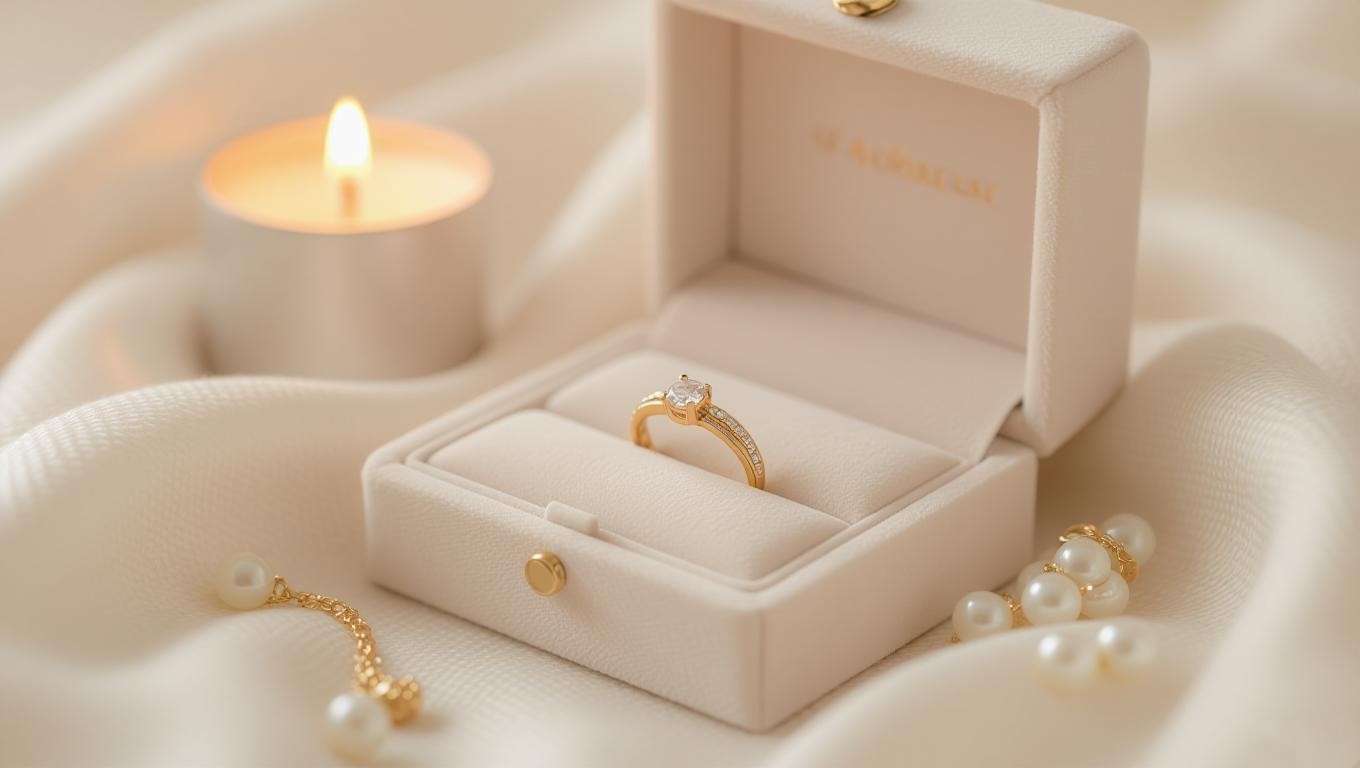
To keep your ring in top condition:
- Cleaning: Use a soft cloth and mild soap to clean metal or gemstone rings. Avoid harsh chemicals that could damage the finish.
- Storage: Store in a soft pouch to prevent scratches, especially for rings with gemstones.
- Maintenance: Check the spinning mechanism periodically. If it becomes stiff, apply a small amount of jewelry-safe lubricant or consult a jeweler.
Proper care ensures your ring remains a reliable mindfulness tool for years to come.
Frequently Asked Questions (FAQs)
How do meditation rings differ from regular rings?
Meditation rings are designed with a spinning outer band that promotes mindfulness through tactile engagement. Unlike regular rings, which are primarily decorative, meditation rings serve as functional tools to reduce stress and enhance focus.
Can meditation rings help with anxiety disorders?
While meditation rings can help manage mild anxiety by providing a grounding focus, they’re not a substitute for professional treatment. Consult a therapist for anxiety disorders, and use the ring as a complementary tool, as recommended by Dr. Emily Carter.
Are meditation rings suitable for children or teens?
Yes, but choose appropriately sized rings with durable materials. For children, opt for hypoallergenic metals to avoid skin irritation. Supervise younger users to ensure safe use.
How long should I use a meditation ring each day?
There’s no set time—use it as needed. Beginners might start with 1–2 minutes during stressful moments, while regular users might incorporate it into longer meditation sessions. Listen to your needs, as mindfulness coach Sarah Bennett advises.
Conclusion
Meditation rings are more than just jewelry—they’re powerful tools for cultivating inner peace in a chaotic world. By combining ancient wisdom with modern design, these rings offer a tactile, accessible way to enhance your daily mindfulness practice. Whether you’re navigating a stressful workday, seeking better focus, or simply wanting to deepen your connection to the present moment, a meditation ring can be a game-changer. Backed by science and embraced by mindfulness experts, they’re a small but mighty addition to your wellness toolkit.
Ready to unlock inner peace? Try a meditation ring and discover how it transforms your mindfulness journey. Share your experiences in the comments below or join online communities to connect with others. As someone who’s witnessed the profound impact of mindful practices, I can assure you: small, intentional steps—like spinning a meditation ring—can lead to lasting calm and clarity.


